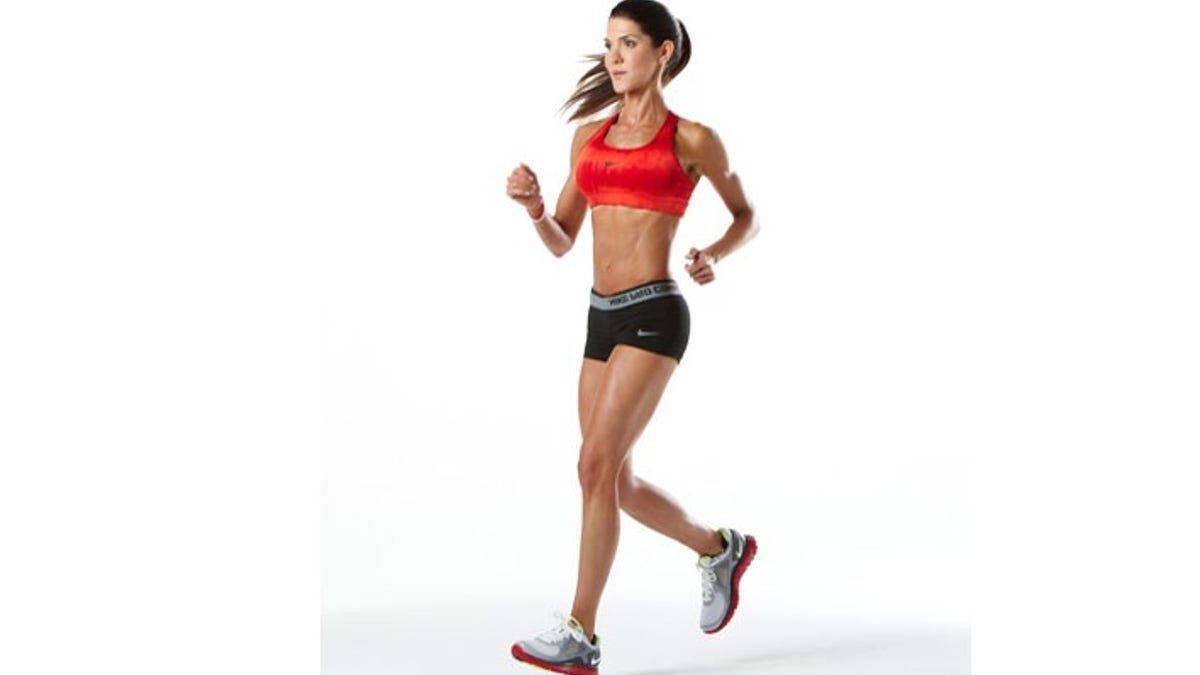
(Andrew Meade)
So many people step on the treadmill or the StairMaster without having any clue of what to do with all those numbers flashing on the console.
If you don’t have any intention of wearing a heart rate monitor to gauge the intensity of your workout and you’re not sure about your Rating of Perceived Exertion, it may be worth to take a look at the Metabolic Equivalent (METs) measurement that many exercise equipment have.
The American College of Sports Medicine (ACSM) states that METs are a useful and convenient way to describe the intensity of a variety of physical activities. One MET equates to 3.5 ml.Kg-1.min-1. This is pretty much the oxygen consumption at rest so when you see on the console 6 METs. It suggests you’re working at 6 times the resting metabolic rate.
Richard Lopez, Ph.D., exercise physiologist, professor at Florida International University, explains that “METs are a more accurate reflection of how much energy is being expended. Heart rate (HR) generally increases linearly with increases in MET expenditure but HR can also be influenced by factors such as temperature making METs a more useful indicator of energy expenditure.”
Maximize your effort
The higher the METs, the higher your caloric expenditure. How do you know at which intensity you should be working?
The ACSM and Centers for Disease Control and Prevention (CDC) defines a light physical activity as requiring less than 3 METs, this includes such activities as walking slowly around the office or home, sitting and standing and performing very light work. Moderate activities are between 3-6 METs and include walking at very brisk pace (4 mph), cleaning, bicycling on flats and doubles tennis. Vigorous activities are greater than 6 METs and include jogging faster than 5 mph, running, shoveling sand, playing basketball, singles tennis and other high-intensity activities.
“In general, a sedentary female age 20 has a METs capacity of 11 METs. With training this should increase about 20 to 25 percent (to 13 1/2 to 14 METs). A good training range is 60 to 80 percent of the MET reserve. Therefore a good training zone for a 20-year old sedentary female is 7 to 9 Mets and for a in-shape 20-year-old female it is around 8 1/2 to 11 Mets. Calculating the training zone for a male is similar except that the average MET capacity for a sedentary 20-year-old male is about 13 1/2 METs. Thus, the training zone for a 20-year old sedentary male is 8 to 11 METs while the training zone for trained 20-year old male is between 10 and 14 METs,” explains Lopez.
Higher METs, healthier heart
Lopez adds that “with each decade the METs capacity will decrease on average 10 percent, which will translate into approximately a 10 percent decrease in the training zone as well. So a sedentary 30-year old female’s training zone is approximately 6.3 to about 8.1 Mets.”
METs can be used to estimate your heart health. METs reflects oxygen uptake which is related to aerobic capacity and those with a high oxygen uptake or those training to improve their oxygen uptake are at reduced risk of cardiovascular disease.
Rafael Nadal Blazes a Trail at the Australian Open
Indeed, a study published in the New England Journal of Medicine shows that for each 1-MET increase in fitness among men with cardiovascular disease, there was a 12 percent improved survival rate.
The method’s imperfection
Using METs as an indicator of training zones, as other methods of assessing one’s training zone, is not perfect. One must always remember that the appropriate intensity for work is influenced by factors such as gender, age and fitness level. The National Council of Strength & Fitness states that the problem when taking into consideration the heart rate training zones that we use to track when using a HR monitor is that this formula (HR max= 220-age) does not take into consideration that gender and fitness level.
To find one’s appropriate training zone, one should begin with a measurement of their aerobic capacity, or their VO2 max, and then train using the recommended percentages of their VO2 max. However, few people have access to VO2 max testing and therefore are limited in their ability to get exact, personalized training measurements. Instead, they can make peace with the console of your favorite cardio equipment and take a look at the METs, even better will be to compare this with your Rate Perceived of Exertion (RPE) which studies show that is one of the non-methodological – but pretty good - ways to get an estimate of how hard your body is working.
Marta Montenegro is an exercise physiologist, certified strength and conditioning, coach and master trainer who is an adjunct professor at Florida International University. Marta has developed her own system of exercises used by professional athletes. Her personal website martamontenegro.com, combines fitness, nutrition and health tips, exercise routines, recipes and the latest news to help you change your life but not your lifestyle. She was the founder of nationally awarded SOBeFiT magazine and the fitness DVD series Montenegro Method.
Follow us on twitter.com/foxnewslatino
Like us at facebook.com/foxnewslatino
